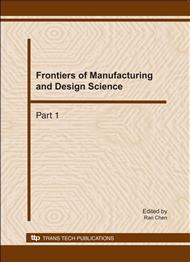p.2742
p.2747
p.2752
p.2757
p.2762
p.2769
p.2774
p.2778
p.2783
Spark Plasma Sintering Behavior of 93W-5.28Ni-1.32Fe-0.4Y2O3 Heavy Alloy Powders
Abstract:
Spark plasma sintering (SPS) method was used to consolidate ultra-fine and mixed 93W-5.28Ni-1.32Fe-0.4Y2O3 (wt pct) powders, and the effects of sintering parameters on the densification degree and the performance of the as-sintered materials were investigated. Results showed that the SPS densification process could be divided into four stages. Compacts were densified rapidly at the stage III and a proper holding time promoted W diffusing into fcc-type Ni-Fe based solution. Heating rate and sintering time had a great influence on densification. When the powders were heated at a rate of 100°C/min to 1230°C and then held for 5min, the density, hardness and transverse rupture strength of the as-sintered material reached the optimum, being 17.18×103kg/m3, 41.4HRC and 935.1MPa, respectively. Its corresponding fracture morphology was characterized as intergranular rupture of W-W, and accompanied with some transgranular cleavage of tungsten grain.
Info:
Periodical:
Pages:
2762-2768
Citation:
Online since:
December 2010
Authors:
Price:
Сopyright:
© 2011 Trans Tech Publications Ltd. All Rights Reserved
Share:
Citation:


